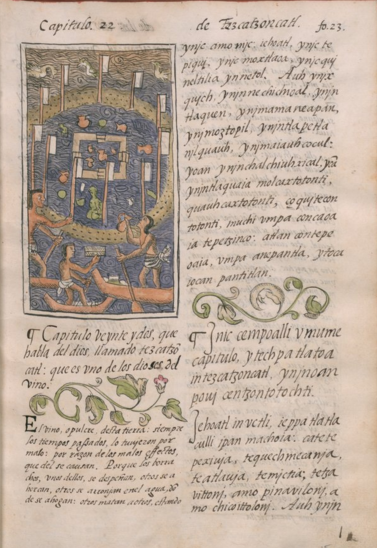
Libraries
Libraries
General history of things in Nueva España, by Bernardino de Sahagún
General history of things in Nueva España is an encyclopaedic work on the people and culture of central Mexico, compiled by Fray Bernardino de Sahagún (1499-1590), a Franciscan missionary who arrived in New Spain in 1529, eight years after the end of the Spanish conquest by Hernán Cortés. Commonly called the Códice Florentino (Florentine Codex), the manuscript in question came into possession of the Medici near 1588 and is now found in the Medicea Laurenziana Library in Florence. Sahagún began his research on indigenous cultures in the 1540s. He applied a methodology that scholars consider a forerunner of the field technique of modern anthropology. His motivations were primarily religious: he believed that in order to convince the natives to Christianity and to eradicate their devotion to the false gods, it was necessary to understand these gods and their dominion over the Aztec people.
The twelve books of the codex were originally bound in four volumes, but were then re-bounded in three. The text is arranged in two columns: on the right is the original Nahuatl text, and, on the left the Spanish translation of Sahagún. The 2468 magnificent illustrations, made by his students, appear above all in the left column, where the text is brief. The illustrations combine the syntactic and symbolic features of the old Nahuatl iconographic tradition with the formal qualities of European Renaissance painting.
Taken from World Digital Library

